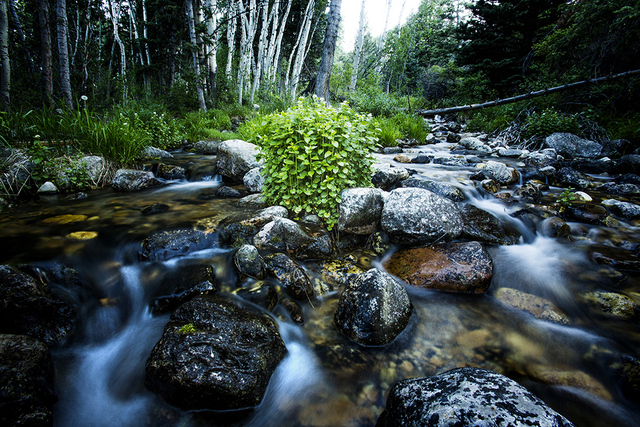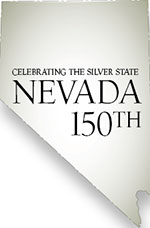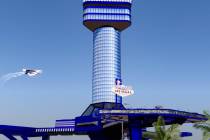The state’s only National Park was a long time coming


Editor’s Note: Nevada 150 is a yearlong series highlighting the people, places and things that make up the history of the state.
It took more than 60 years to win designation, but it’s not hard to see why Great Basin finally became Nevada’s first — and so far only — National Park in 1986.
The 77,000-acre reserve is home to the state’s oldest trees, its most famous and ornate cave, its only glacier and its second-tallest peak.
“There are so many things that make this park special,” park ranger Kelly Carroll said.
But the attraction visitors seem drawn to the most is the solitude.
Though the park has seen record traffic in recent years, it remains one of the least-visited national parks. It has never drawn more than 95,000 people in a single year, and its total visitation of 3.4 million people since 1934 is roughly what Lake Mead National Recreation Area draws every six months or so.
Tucked away in the Snake Range of eastern White Pine County, about 250 miles from both Las Vegas and from Salt Lake City, Great Basin is busiest between Memorial Day and Labor Day. Tourism slows to a trickle during the cold winter months.
The area started down the road to national prominence in 1885, when a local rancher and miner named Absalom S. Lehman began major exploration of the quarter-mile-long cavern that would eventually bear his name.
President Warren Harding proclaimed Lehman Caves a national monument in 1922. Two years later, U.S. Sen. Key Pittman of Nevada first floated the idea of establishing a national park that would take in the cavern, 13,063-foot Wheeler Peak and other parts of the Snake Range.
Pitman’s idea gained little traction until 1959, when identical bills seeking national park status died in the House and Senate, thanks mainly to longtime Democratic Nevada Rep. Walter Baring, who worked to stymie the park until he lost his House seat in 1972.
Twelve years later, a little-known Nevada Democrat named Harry Reid sponsored legislation to create Great Basin National Park. A compromise measure scaling back Reid’s 129,000-acre proposal to 77,000 acres eventually cleared the House and Senate and was signed into law by President Ronald Reagan on Oct. 27, 1986.
Not everyone liked the idea. Almost 30 years on, the establishment of the park remains a sore subject for some in its gateway town of Baker, which is home to roughly 100 people and a handful of park-dependent businesses. Some locals still complain about the loss of prime hunting ground or that the feds closed the park to grazing and stopped stocking the creeks with fish.
But the park’s champions have always outnumbered its detractors.
The park was meant to exemplify the entire Great Basin, a 200,000-square-mile area without a single river or stream that reaches the ocean. The basin stretches from the Wasatch Front to the Sierra Nevada and from the Snake River to the Mojave Desert. It is marked by vast north-south valleys and isolated mountain ranges known as “sky islands” for their tendency to support their own unique plants and animals.
Great Basin National Park has plenty of sky-island species, along with a rare stand of bristlecone pine trees that rank among the oldest living things on Earth at nearly 5,000 years old.
“When you look at one, you can’t help but think, ‘What has this tree seen in the past four or five thousand years?’ ” Carroll said.
But he said his favorite thing about Great Basin is what happens after sundown.
“When I first came here, I was blown away by the natural darkness of the skies above this park. I hadn’t seen dark skies like this in my life,” said Carroll, who was posted in Alaska before coming to Nevada.
The geologist by trade was so inspired, he went from being an amateur stargazer to leading the park’s astronomy program.
As remote and quiet as it is, though, Great Basin and its protectors increasingly find themselves at the center of a noisy dispute over where the thirsty Las Vegas Valley might one day find more water. A controversial plan by the Southern Nevada Water Authority would tap groundwater in the valleys that bracket the park and pump it south through a multibillion-dollar pipeline network. Park Service personnel and others with a stake in the area view the proposal with suspicion and alarm.
Among them was Jo Anne Garrett, who served as one of the park’s greatest advocates and fought the water project until she died last year at 88.
Garrett and her husband settled on the eastern slope of the Snake Range before there was a park, building their house from local stone and timbers from the old Nevada Northern Railroad. She woke each morning just outside the park boundary to sweeping views of sky, trees and snow-covered mountains.
“It’s just as far away from anywhere as it’s always been,” Garrett told the Review-Journal in 2006, on the occasion of the park’s 20th anniversary. “It’s hard to justify all this open space, but taking care of it in this day and age sure seems important.”
Contact Henry Brean at hbrean@reviewjournal.com or 702-383-0350. Follow @RefriedBrean on Twitter.



















